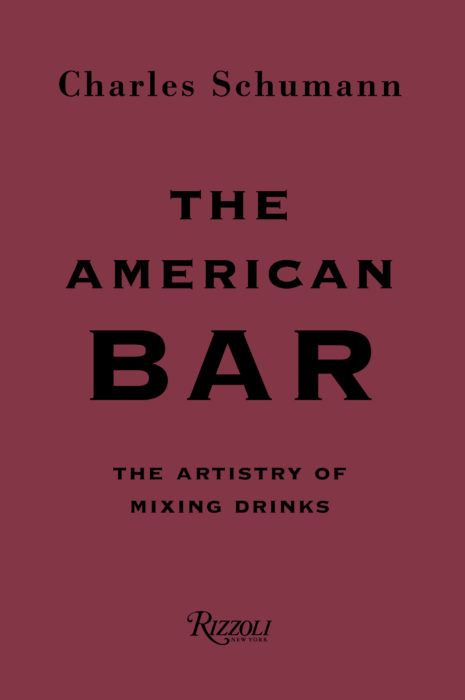
Globalization is an interesting and important. For twenty years or more, we’ve been told about its benefits and the dangers. Culinary globalization, like the spread of cocktails around the world, is intense. There is no globalization danger in this book. There are great, great benefits.
Cocktails are an American invention, starting with those fierce punches in Colonial times. So it is a homage to us that this book is called The American Bar. It is written, not by an American, but by a German, a distinguished barman Charles Schumann whose pedigree is utterly prestigious.
Charles was born in 1941 in Bavaria, studied hotel management in Switzerland, worked in France, and began his bartending career in 1973 in the Munich version of Harry’s New York Bar. A decade later, he opened Schumann’s American Bar, now simply called Schumann’s.
The first edition of this book came out in 1995 and sold over 200,000 copies in English. The New York Times called it “the drink mixers bible.” And so it remains in this wonderful new edition. It retains the very stark format of 1995. There are no glossy pictures of drinks here. The book is small, just 4 ½ “ by 7”. But thick, almost an inch thick, and every page is packed with type and information. Really packed in a clever way that differentiates this book from any of the other fine cocktail books you may have seen or have.
There are certainly beverage recipes here. Almost two hundred pages of them. But there is more. This is very much like a manual for becoming a bartender. The battery of information, and the depth of detail, mean that if you study this book you will end up quite well educated — you could hold your own behind the bar. You won’t get a diploma reading this book, but you’ll know vastly more than you do today. And your drinking life will be elevated to a level you might not have thought possible.
The book has a very interesting structure:
An opening Index presents all the recipes arrange alphabetically by drink categories the base spirits [so you’ll find 16 Daiquiris]
Drinks and Cocktails from A-Z is 180 pages of drink recipes, the body of the book
Cocktail and Drink Categories formally defines and compares flips, highballs, juleps, toddies and more
The Artistry of Mixing Drinks and Cocktails is a fifty page course in being a bartender, a damn good one
Cocktail Components from A-Z is 110 page summary of liquors with descriptions and comparisons that guide you to drink perfection
Lastly, there is the Brands from A-Z, a reverse dictionary that takes those names you often see in a recipe, like Pyrat, and tells you that it is a rum [no more searching web for an answer; it’s here at your fingertips].
Charles is an expert and has his opinions, strong ones. He is direct in his advice. For example, he insists you need bar food. But how do you serve it? Well, as he states, “The Plate is Round. A plate, for me, is white and round, small or medium-sized. I’m not a fan of the silly decorative plates that are popular in many bars at the moment.” Period.
This book was written early in the internet age. On the web, you have to type and search. Unless you open multiple tabs, you can’t have multiple pieces of information at your command. With this tidy book, and a handful of stickies, you can manage the most complex beverage project: doing research, comparing recipes, and selecting ingredients. All in one small package written by an expert.
I’ve taken to going to bed each night with this book. A few pages a night. A paced education in booze and bartending. And a delight to dream about.
How do I end this review of a German’s perceptive perspective of American cocktails? We need some intrigue. Perhaps some British accent. For your consideration, here is just the beverage:
James Bond
- 1 Sugar cube
- Dashes of Angostura Bitters
- 1 ounce vodka
- Champagne
Saturate the sugar cube with the bitters in a champagne flute. Pour in the vodka, top off with the champagne. Repeat and repeat.
